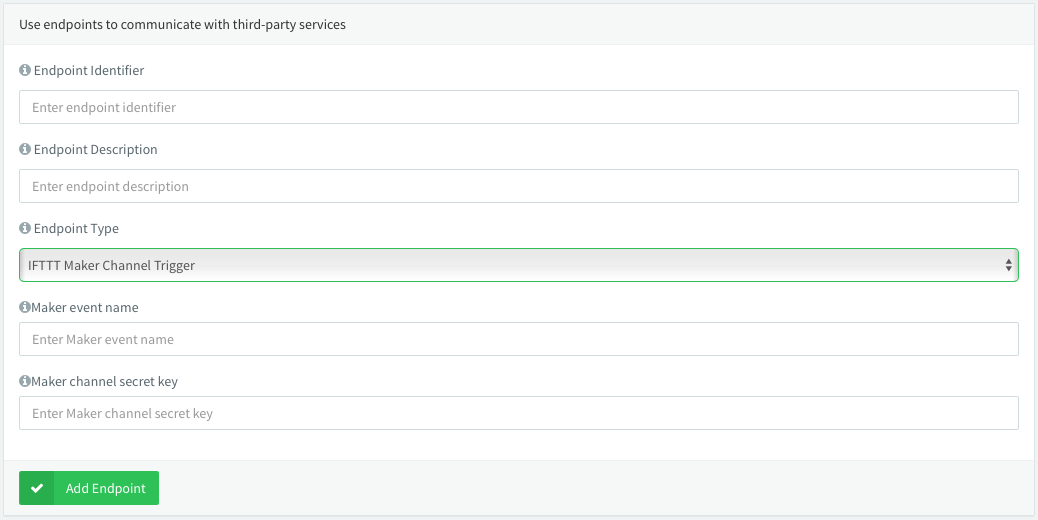This repository contains all the endpoint templates that can be loaded in a Thinger.io server instance to execute endpoint calls by devices. A template is basically a definition of a HTTP call where some parameters are modified in runtime by the server, i.e., for setting credentials in headers, modifying URLs, and so on.
To load the endpoint templates in a Thinger.io server instance, just access a shell where the MongoDB server instance is running, and where the command mongoimport exists. Then, execute the script import_script.sh that will load all the JSON templates definitions in the database.
Note: The import script just try to import the endpoints in the local thinger database. If you are using a custom database name, you may need to modify the script. Sample commands:
git clone https://github.com/thinger-io/Server-Endpoints
cd Server-Endpoints
chmod +x import_script.sh
./import_script.shA Thinger.io endpoint template is defined as the following example (for calling the IFTTT Maker Channel Trigger).
{
"_id" : "ifttt_maker_trigger",
"name" : "IFTTT Maker Channel Trigger",
"type" : "http_request",
"description" : "....",
"http_request" : {
"url" : "https://maker.ifttt.com/trigger/{{event}}/with/key/{{key}}",
"body_type" : "json",
"headers" : [],
"method" : "POST"
},
"parameters" : [
{
"id" : "event",
"name" : "Maker event name",
"description" : "The name of the event you have entered in the IFTTT Maker Channel while configuring the trigger channel, like \"button_pressed\" or \"front_door_opened\"."
},
{
"id" : "key",
"name" : "Maker channel secret key",
"description" : "Your IFTTT Maker Channel secret key that will allow call your defined Maker events."
}
]
}The console then processes this template and provides an interface for easily configuring the endpoint, like the required credentials:
After importing the templates, it is possible to see them in the database, as in the following capture. Notice the endpoints_templates table:
Do you have any endpoint template that can be useful for other users? Share it with us!

